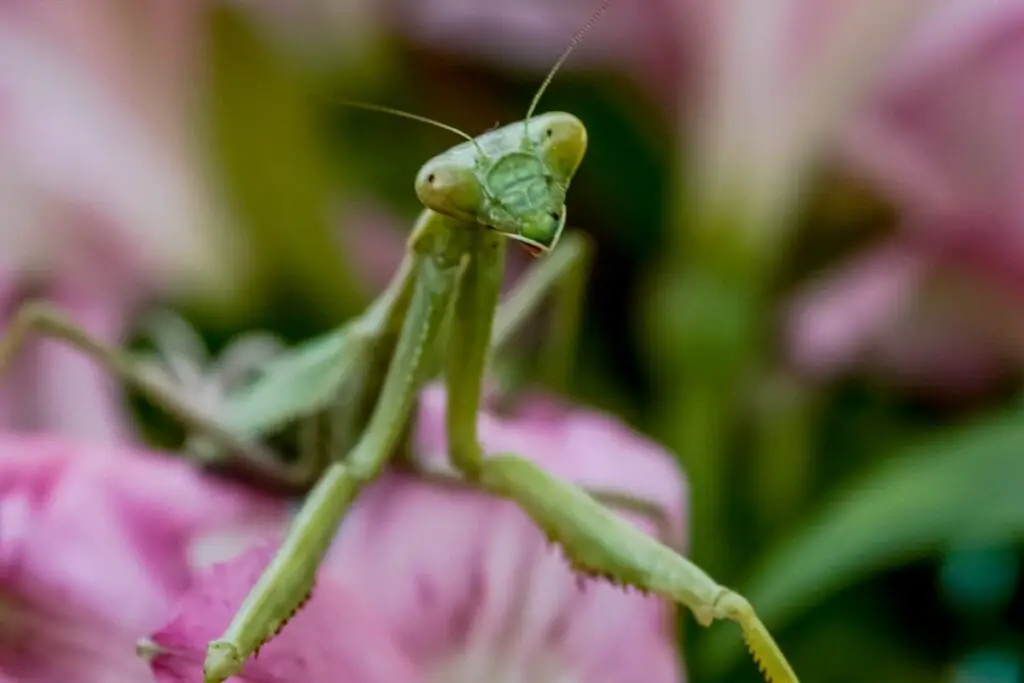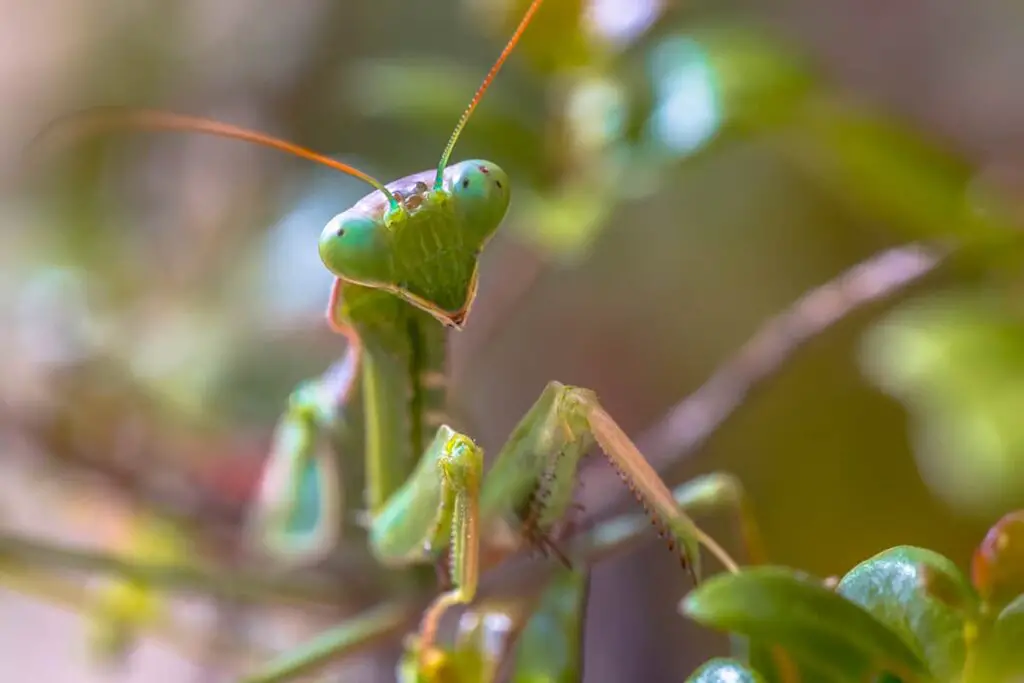Praying mantises are fascinating creatures, renowned not just for their predatory skills but also for their unique reproductive behaviors. If you’re interested in breeding these insects, understanding the proper techniques is crucial for success. Almost all praying mantis species require fertilization to develop their eggs, unlike some other insects that can reproduce parthenogenically. Learning how to distinguish males from females and providing the right environment for mating are the first steps in the breeding process.
The mating ritual of praying mantises includes some surprising behaviors that often involve the female eating the male before, during, or after mating. However, with careful observation and timing, you can successfully breed praying mantises in captivity. It’s essential to prepare a suitable enclosure that mimics their natural habitat and to ensure that both the male and female are well-fed before introducing them for mating. After mating, it is just as important to care for the female to support her while she lays her eggs.
Breeding praying mantises can be a rewarding experience, giving you insight into the life cycles and habits of these incredible insects. It requires patience and attentiveness, but by following the correct practices, you can foster a healthy environment for these mantises to mate and produce the next generation. Correct habitat setup, precise timing, and careful aftercare are key to successful breeding.
Overview of Praying Mantis Breeding Techniques
To ensure a successful breeding process, you’ll need to understand the breeding cycles of praying mantises and learn how to select the ideal pairs for mating.
Understanding Breeding Cycles
Your praying mantis will be ready to mate typically 2-3 weeks after their final molt. Monitoring this cycle is critical because both males and females need to be mature enough for a successful breeding. Remember, patience is vital, as some hobbyists even wait up to 4-5 weeks to ensure the mantises are fully prepared.
Selecting Breeding Pairs
When selecting breeding pairs, make sure that both the male and female are well-fed and not stressed, contributing to a smoother mating process. It’s also essential to introduce the male to the female’s environment carefully, preventing the female from detecting him prematurely. This strategy can increase the chances of a successful coupling.
Creating an Ideal Breeding Environment
To successfully breed praying mantises, you must provide them with a habitat that closely mimics their natural environment, coupled with precise temperature and humidity control.
Habitat Requirements
Your breeding enclosure should be spacious enough to prevent the mantises from feeling crowded. A general recommendation is to use the largest enclosure possible. This space allows for natural behaviors and reduces stress during the breeding process. You’ll want to ensure that there are plenty of sticks or plants for the mantises to climb on, as they typically mate in foliage. Providing a vertically oriented environment with climbing structures mimics their natural habitat and facilitates the mating process.
Temperature and Humidity Control
The temperature within your breeding environment should be kept within a specific range to promote successful mating and egg development. Aim for a temperature between 70°F and 80°F (21°C and 27°C). Humidity should also be monitored and maintained, as praying mantis eggs require certain humidity levels to hatch successfully. A humidity level around 60-70% is often recommended; however, you should adjust these conditions based on the specific species you are breeding, as some may require higher or lower levels. Use hygrometers and thermometers to accurately measure and maintain these environmental factors.
Breeding Process and Behavioral Observation
When you start breeding praying mantises, observing their unique mating rituals and ensuring proper egg laying and ootheca formation are crucial for successful reproduction.
Mating Rituals
Before mating, it’s essential to identify a mature male and female. Typically, males are slimmer and have longer wings. When introducing the male to the female’s enclosure, do so with care – a well-fed female is less likely to exhibit cannibalistic behavior. Males approach females cautiously and, if receptive, females allow the males to mount and copulate. Copulation can last for several hours, with the male often retreating quickly after to avoid being eaten by the female.
Egg Laying and Ootheca Formation
After mating, the female will lay her eggs, encapsulating them in a frothy substance that hardens into a protective case called an ootheca. This case protects the developing nymphs inside, providing them with a safeguard from predators and harsh environmental conditions. You should monitor the ootheca’s humidity and temperature carefully, as these factors are vital for the nymphs’ development. Hatching may occur within three to six weeks, depending on species and conditions, revealing many miniature mantises ready to begin their life cycle.
Caring for Nymphs
When raising praying mantis nymphs, you’re essentially ensuring the next generation thrives. Your primary focus should be on proper feeding and creating an environment conducive to their growth.
Feeding Practices
What to Feed:
- Newly hatched nymphs do well on small insects like springtails, aphids, or fruit flies.
- As they grow, you can gradually introduce larger prey.
How Often to Feed:
- Feed your nymphs every 2-3 days, ensuring that food is always available.
- Remove uneaten prey to prevent the spread of disease.
To monitor their feeding, keep an observation log noting:
- Date and time of feeding
- Type and quantity of food given
- Nymphs’ eating behavior
Habitat Adjustments for Growth
Temperature and Humidity:
- Maintain a temperature of 75-86°F (24-30°C) for optimal growth.
- A humidity level of 60-70% is ideal, which you can achieve by regular misting.
Housing:
- Provide a vertically oriented enclosure to accommodate molting, as mantids need to hang upside down.
- Use fine mesh or netting to prevent escape and permit climbing.
Safety Tip: Separate your nymphs into individual enclosures or space them well in larger ones to prevent cannibalism as they grow.
Frequently Asked Questions
Breeding praying mantises can be a fascinating experience, and you might have various questions about their mating behaviors, life cycle, and breeding techniques. This section aims to shed light on those queries.
What is the typical behavior observed during praying mantis mating?
During mating, the male praying mantis approaches the female cautiously to avoid being attacked. Once he’s close enough, he will leap onto the female’s back to copulate. In some cases, the female may decapitate and consume the male after or even during mating, providing nutrition for the eggs she’ll produce later.
Can you explain the life cycle and breeding season of praying mantises?
Praying mantises go through a life cycle that includes egg, nymph, and adult stages. The females lay eggs in a foam-like case called an ootheca during the breeding season, which typically occurs in the fall. Nymphs emerge in the spring and go through several molts before reaching adulthood. The precise timing of these events can vary depending on the species and environment.
What factors should be considered when breeding praying mantises in captivity?
When breeding praying mantises in captivity, you should ensure a suitable environment that mimics their natural habitat. Factors like temperature, humidity, space, and proper nutrition are crucial for their health and successful mating. Additionally, it’s important to have mature male and female mantises that are ready to reproduce.
How do female praying mantises behave after mating?
After mating, female praying mantises will focus on finding a suitable place to lay their eggs. They will produce an ootheca, which can contain hundreds of eggs, depending on the species. The female will then guard the ootheca until her death, which occurs after laying or due to the onset of winter, depending on the species.
Are there any special techniques required for breeding baby praying mantises?
Breeding baby praying mantises, or nymphs, requires careful attention to their diet and environment. They should be fed small prey like springtails, aphids, or fruit flies and separated from each other to prevent cannibalism. Monitoring their growth and ensuring they have enough space to molt and develop is key.
What are some interesting facts about praying mantis reproduction?
One interesting fact about praying mantis reproduction is that not all species require the male for fertilization; some can reproduce through parthenogenesis. Additionally, the ootheca, the protective case the female creates for her eggs, is a marvel of insect architecture, designed to endure harsh weather and predators.
Driven by a passion for those tiny creatures that rule our world, we at Bug Domain strive to be your go-to resource for information on insects.




